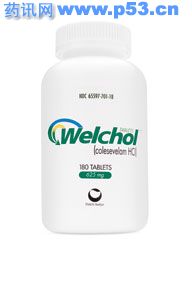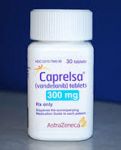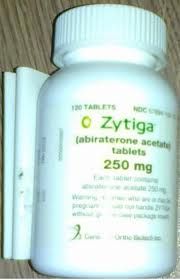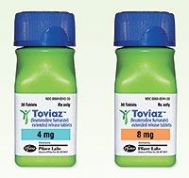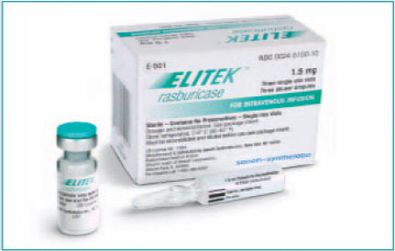美国Sankyo Pharma公司宣布Colesevelam(商品名WelChol)作为一种新的降低胆固醇的药物已在全美国投放市场,可供医师和病人选用。
WelChol不但可以单独使用降低LDL胆固醇,而且还是唯一的经FDA批准的可与他汀类药物联合使用的降脂药。对以胆固醇升高为主的高脂血症,当饮食和锻炼不能很好达到效果时, WelChol单独使用或与他汀类合用可有效的降低血浆胆固醇。
WelChol的一个优点是它与其他常用的降低胆固醇的药物不同,它不被吸收入血而散布全身。美国芝加哥临床研究中心主席Michael Davidson教授在评价这种新药时说:“对于血浆胆固醇较高而正在服用其他降脂药的病人来说,WelChol是他们的福音,因为它不被吸收的特性决定了它无全身副作用,这些副作用在其他降脂药中很常见。这使得已经服药很久的病人可以在加服WelChol的同时继续服用其他降脂药。”
此外,WelChol与其他药之间的交叉反应也很小。在药物交叉反应研究中,WelChol没有明显的影响地高辛、洛伐他汀、奎尼丁和华法令等药的吸收,而这些药却与其他降脂药之间却有显著的反应。尽管如此,病人还是应该在服用WelChol之前将他们正在服用的药物告诉他们的医生。
一项调查显示,尽管国家胆固醇教育计划(NCEP)中列出了降低胆固醇的指导方针,但仅有54%的患有高胆固醇血症的被调查者知晓他们的降脂目标。另一项称为血脂治疗评估计划(L-TAP)的研究指出,在患有高胆固醇血症的被调查者中,仅有38%接受降脂治疗的病人达到了NCEP要求的胆固醇降低的目标水平。为此,Sankyo Pharma的负责人William L. Bailey说:“L-TAP研究表明对于难以达到降脂目标水平的病人来说,的确需要在现有药物治疗之上找到更好的辅助药物。我们临床试验表明,在降低LDL-c方面WelChol是有效的和安全的。特别是当WelChol与他汀类药物(如洛伐他汀、辛伐他汀等)联合使用时,WelChol能够很好的达到降低胆固醇的作用,且这种效果是单用其中一种药物所达不到的。”美国贝勒医学院的Peter H. Jones教授指出:“WelChol与他汀类药物合用可显著改善病人的血脂水平,以达到NCEP的目标水平。此外如果病人不能耐受他汀类药物,单独使用WelChol也能有很不错的效果。”
Welchol™ (colesevelam HCl) Receives FDA Approval to Reduce Blood Glucose in
Adults with Type 2 Diabetes
First and only medication approved to reduce
both A1C and LDL cholesterol
Parsippany, NJ · January 22, 2008 /PRNewswire/ — Daiichi Sankyo, Inc., announced that the United States Food and Drug Administration (FDA) has approved Welchol™ (colesevelam HCl) to improve glycemic control (measured as hemoglobin A1C) in adults with type 2 diabetes mellitus in combination with metformin, sulfonylureas, or insulin, either alone or in combination with other anti-diabetic agents. Welchol is now the first and only medication approved to reduce both glucose levels and low density lipoprotein cholesterol levels (LDL-C). The ADA estimates that 20.8 million people in the United States have diabetes with more than 90 percent of these people having type 2 diabetes.1 Forty percent of patients with type 2 diabetes also have high LDL-cholesterol.2 Welchol is a new option that addresses both these chronic health conditions and provides physicians with a unique therapeutic approach for treating patients with type 2 diabetes.
Pivotal data presented at the American Diabetes Association's (ADA) 67
In addition, two other pivotal studies showed similar results in A1C reductions when Welchol was added to either sulfonylurea-based therapy or insulin-based therapy. In patients with type 2 diabetes who were inadequately controlled on sulfonylurea-based therapy the addition of Welchol was shown to have significant reductions in A1C (mean reduction of 0.54%; p<0.001) vs. placebo at week 26. In patients inadequately controlled with insulin, alone or in combination with other anti-diabetic agents, the addition of Welchol was shown to have a significant mean reduction in A1C (mean reduction of 0.50%; p<0.0001) vs. placebo.
"Welchol now offers physicians a treatment option that addresses two major cardiovascular risk factors; elevated LDL cholesterol and blood glucose in patients with type 2 diabetes," said Ronald B. Goldberg, MD, an investigator in the insulin and metformin pivotal studies and Professor of Medicine at the Division of Diabetes and Metabolism and Associate Director of the Diabetes Research Institute at the University of Miami, Miller School of Medicine in Florida. "Cardiovascular risk factors are of great concern because patients with type 2 diabetes have a significantly increased risk of developing cardiovascular disease. Once clinical cardiovascular disease develops, these patients have a poorer prognosis than normoglycemic patients."
Since 2000, Welchol, a bile acid sequestrant, has been indicated, alone or in combination with a statin, for the reduction of elevated LDL-C in patients with primary hypercholesterolemia. It is different from most other cholesterol-lowering drugs on the market because it is non-systemic, meaning that the body does not absorb it and it is eliminated without traveling to the liver or kidneys. Therefore, Welchol is not expected to have drug interactions via the cytochrome P450 pathway. Systemic medications, which include statins, fibrates and cholesterol absorption inhibitors, are those that are absorbed from the intestine into the bloodstream and travel throughout the body, specifically to the liver and/or kidneys.
Additionally, Welchol has demonstrated beneficial effects on other lipid parameters such as HDL-C and APO-B. Welchol has also been studied in combination with fenofibrate in patients with mixed dyslipidemia (Fredrickson Type IIb), and provided additional LDL-C reductions in these patients when added to a stable fenofibrate regimen. Welchol is not indicated for use in combination with fenofibrate or in the treatment of mixed dyslipidemia or lipid parameters other than LDL-C.
"We are excited by the opportunity to help more patients with chronic conditions reach their recommended health goals," said Joseph P. Pieroni, President and CEO of Daiichi Sankyo, Inc. "This approval represents an important milestone for our growing U.S. organization and underscores our continued commitment to combating cardiovascular and metabolic diseases."
People with diabetes face significantly higher risk of developing cardiovascular disease.3 The ADA recommends that patients with type 2 diabetes target an A1C level of <7%.4 A1C is a common test for persistent hyperglycemia ("too much glucose in the blood"). Additionally, the National Cholesterol Education Program (NCEP) recommends that patients with type 2 diabetes keep their cholesterol levels in check and target an LDL-C goal of <100 mg/dL.5 Despite this recommendation, nearly 40 percent of patients with type 2 diabetes have LDL cholesterol levels greater than 130 mg/dL.6
It is estimated that half of all Americans have elevated blood cholesterol levels that can negatively impact their health and quality of life.7 According to the National Healthcare Quality Report, nearly 40 percent of adults with high cholesterol also have type 2 diabetes.8
IMPORTANT INFORMATION ABOUT WELCHOL
Welchol is indicated as an adjunct to diet and exercise to reduce elevated low-density lipoprotein cholesterol (LDL-C) in patients with primary hyperlipidemia (Fredrickson Type IIa) as monotherapy or in combination with an hydroxymethyl-glutaryl-coenzyme A (HMG CoA) reductase inhibitor. Welchol is also indicated as an adjunct to diet and exercise to improve glycemic control in adults with type 2 diabetes mellitus.
Welchol should not be used for the treatment of type 1 diabetes or for the treatment of diabetic ketoacidosis. It has not been studied in type 2 diabetes as monotherapy or in combination with a dipeptidyl peptidase 4 inhibitor and has not been extensively studied in combination with thiazolidinediones. Welchol has not been studied in Fredrickson Type I, III, IV, and V dyslipidemias. Welchol is contraindicated in individuals with bowel obstruction, those with serum triglyceride (TG) concentrations of >500 mg/dL, or with a history of hypertriglyceridemia-induced pancreatitis.
The effect of Welchol on cardiovascular morbidity and mortality has not been determined.
Welchol can increase serum TG concentrations particularly when used in combination with sulfonylureas or insulin. Caution should be exercised when treating patients with TG levels >300 mg/dL.
Welchol may decrease the absorption of fat-soluble vitamins A, D, E, and K. Patients on vitamin supplements should take their vitamins at least 4 hours prior to Welchol. Caution should be exercised when treating patients with a susceptibility to vitamin K or fat soluble vitamin deficiencies.
Caution should also be exercised when treating patients with gastroparesis, gastrointestinal motility disorders, major gastrointestinal tract surgery, and when treating patients with dysphagia and swallowing disorders.
Welchol reduces gastrointestinal absorption of some drugs. Drugs with a known interaction with colesevelam (glyburide,levothyroxine, and oral contraceptives [ethinyl estradiol, norethindrone]) should be administered at least 4 hours prior to Welchol. Drugs that have not been tested for interaction with colesevelam, especially those with a narrow therapeutic index, should also be administered at least 4 hours prior to Welchol. Alternatively, the physician should monitor drug levels of the co-administered drug.
Primary Hyperlipidemia: In clinical trials, the adverse reactions observed in ≥2% of patients — and more commonly with Welchol than placebo — regardless of investigator assessment of causality were constipation (11.0% vs. 7.0%), dyspepsia (8.3% vs. 3.5%), nausea (4.2% vs. 3.9%), accidental injury (3.7% vs. 2.7%), asthenia (3.6% vs. 1.9%), pharyngitis (3.2% vs. 1.9%), flu syndrome (3.2% vs. 3.1%), rhinitis (3.2% vs. 3.1%) and myalgia (2.1% vs. 0.4%).
Type 2 Diabetes: In clinical trials, the adverse reactions observed in ≥2% of patients — and more commonly with Welchol than placebo — regardless of investigator assessment of causality were constipation (8.7% vs. 2.0%), nasopharyngitis (4.1% vs. 3.6%) dyspepsia (3.9% vs. 1.4%), hypoglycemia (3.0% vs. 2.3%), nausea (3.0% vs. 1.4%) and hypertension (2.8% vs. 1.6%).
Post-marketing experience: Due to the voluntary nature of these reports it is not possible to reliably estimate frequency or establish a causal relationship. Increased seizure activity or decreased phenytoin levels have been reported in patients receiving phenytoin concomitantly with Welchol. Reduced International Normalized Ratio (INR) has been reported in patients receiving warfarin concomitantly with Welchol.
Welchol is Pregnancy Category B.
For more information on Welchol, call 877-4-DSPROD (877-431-7763), or go to the Welchol web site at
【中文品名】盐酸考来维仑
【药效类别】降血脂药
【通用药名】COLESEVELAM HYDROCHLORIDE
【别 名】Welchol
【化学名称】 1-Hexanaminium, N,N,N-trimethyl-6-(2-propenylamino)-, chloride, polymer with (chloromethyl)oxirane, 2-propen-1-amine and N-2-propenyl-1-decanamine, hydrochloride
【CA登记号】[182815-44-7]
【用 途】本品可单独或与他汀类药物联合使用,用作原发性高胆固醇血症病人饮食和运动的辅助治疗,以降低其升高的低密度脂蛋白胆固醇〔LDL—C)水平。
Welchol (colesevelam hydrochloride)
Company: Daiichi Sankyo
Approval Status: Approved January 2008
Treatment for: glycemic control in type 2 diabetes mellitus
Areas: Endocrinology
General Information
Welchol contains colesevelam hydrochloride, a non-absorbed, polymeric, lipid-lowering and glucose-lowering agent. It works by binding bile acids, including the major bile acid in humans known as glycocholic acid. However, the exact mechanism by which Welchol improves glycemic control is unknown.
Welchol is specifically indicated as an adjunct to diet and exercise to improve glycemic control in adults with type 2 diabetes mellitus.
Welchol is supplied as a 625 mg tablet designed for oral administration. The recommended initial dose of the drug is 6 tablets once daily or 3 tablets twice daily. Welchol should be taken with a meal and liquid.
Clinical Results
FDA Approval
The FDA approval of Welchol for this indication was based on the results of three clinical trials. These double-blind, placebo-controlled add-on therapy trials enrolled a total of 1,018 subjects with baseline A1C 7.5-9.5%. The subjects received Welchol, in combination with metformin, sulfonylureas or insulin or placebo administered either as 3 tablets twice daily with lunch and dinner or as 6 tablets with dinner alone.
Add-on Combination Therapy with Metformin:
Welchol 3.8 g/day or placebo was added to background anti-diabetic therapy in a 26-week trial of 316 subjects already receiving treatment with metformin alone (N=159) or metformin in combination with other oral agents (N=157). The combination of Welchol plus metformin resulted in statistically significant placebo-corrected reductions in A1C with a -0.6 treatment difference (p<0.001) and FPG with a -14 treatment difference (p=0.10). The mean percent change in serum LDL-C levels with Welchol compared to placebo was -16% among statin users and statin non-users; the median percent change in serum TG levels with Welchol compared to placebo was -2% among statin users and 10% among statin non-users. The mean change in body weight was -0.5 kg for Welchol and -0.3 kg for placebo.
Add-on Combination Therapy with Sulfonylurea:
Welchol 3.8 g/day or placebo was added to background anti-diabetic therapy in a 26-week trial of 460 patients already treated with sulfonylurea alone (N=156) or sulfonylurea in combination with other oral agents (N=304). In combination with a sulfonylurea, Welchol resulted in statistically significant placebo corrected reductions in A1C and FPG. Welchol also reduced TC, LDL-C, Apo B, and non-HDL-C, but increased serum TG (Table 11). The mean percent change in serum LDLC levels with Welchol compared to placebo was -18% among statin users and -15% among statin non-users; the median percent increase in serum TG with Welchol compared to placebo was 29% among statin users and 9% among statin non-users. The mean change in body weight was 0.0 kg for Welchol and -0.4 kg for placebo.
Add-on Combination Therapy with Insulin:
Welchol 3.8 g/day or placebo was added to background anti-diabetic therapy in a 16-week trial of 287 patients already treated with insulin alone (N=116) or insulin in combination with oral agents (N=171). At baseline, the median daily insulin dose was 70 units in the Welchol group and 65 units in the placebo group. In combination with insulin, Welchol resulted in a statistically significant placebo-corrected reduction in A1C (Table 12). Welchol also reduced LDL-C and Apo B, but increased serum TG (Table 13). The mean percent change in serum LDL-C levels with Welchol compared to placebo was -13% among statin users and statin non-users; the median percent increase in serum TG levels with Welchol compared to placebo was 24% among statin users and 17% among statin non-users. The mean change in body weight was 0.6 kg for Welchol and 0.2 kg for placebo.
Ongoing Study Commitments
Daiichi Sankyp has agreed to study WelChol as monotherapy treatment for type 2 diabetes mellitus:
Protocol Submission: by July 31, 2008
Study Start: by January 31, 2009
Final Report Submission: by July 31, 2011
Daiichi Sankyo has agreed to study WelChol in combination with thiazolidinediones as treatment for type 2 diabetes mellitus:
Protocol Submission: by October 31, 2008
Study Start: by April 30, 2009
Final Report Submission: by October 31, 2011
Daiichi Sankyo has agreed to the following time lines for in Vivo Studies for an ARB, glimepiride, glipizide ER, and phenytoin:
Protocol Submission: by June 30, 2008
Study Start: by September 30, 2008
Final Report Submission: by September 30, 2009
Side Effects
Adverse events associated with the use of Welchol may include, but are not limited to, the following:
Constipation
Nasopharyngitis
Dyspepsia
Hypoglycemia
Nausea
Hypertension
Mechanism of Action
Colesevelam hydrochloride, the active pharmaceutical ingredient in Welchol, is a non-absorbed, lipid-lowering polymer that binds bile acids in the intestine, impeding their reabsorption. However, the exact mechanism by which Welchol improves glycemic control is unknown.
Literature References
Staels B, Kuipers F Bile acid sequestrants and the treatment of type 2 diabetes mellitus. Drugs 2007;67(10):1383-92
Zieve FJ, Kalin MF, Schwartz SL, Jones MR, Bailey WL Results of the glucose-lowering effect of WelChol study (GLOWS): a randomized, double-blind, placebo-controlled pilot study evaluating the effect of colesevelam hydrochloride on glycemic control in subjects with type 2 diabetes. Clinical therapeutics 2007 Jan;29(1):74-83
Zema MJ Colesevelam HCl and ezetimibe combination therapy provides effective lipid-lowering in difficult-to-treat patients with hypercholesterolemia. American Journal of Therapeutics 2005 Jul-Aug;12(4):306-10
Additional Information
For additional information regarding Welchol or glycemic control, please visit the Welchol web page.


